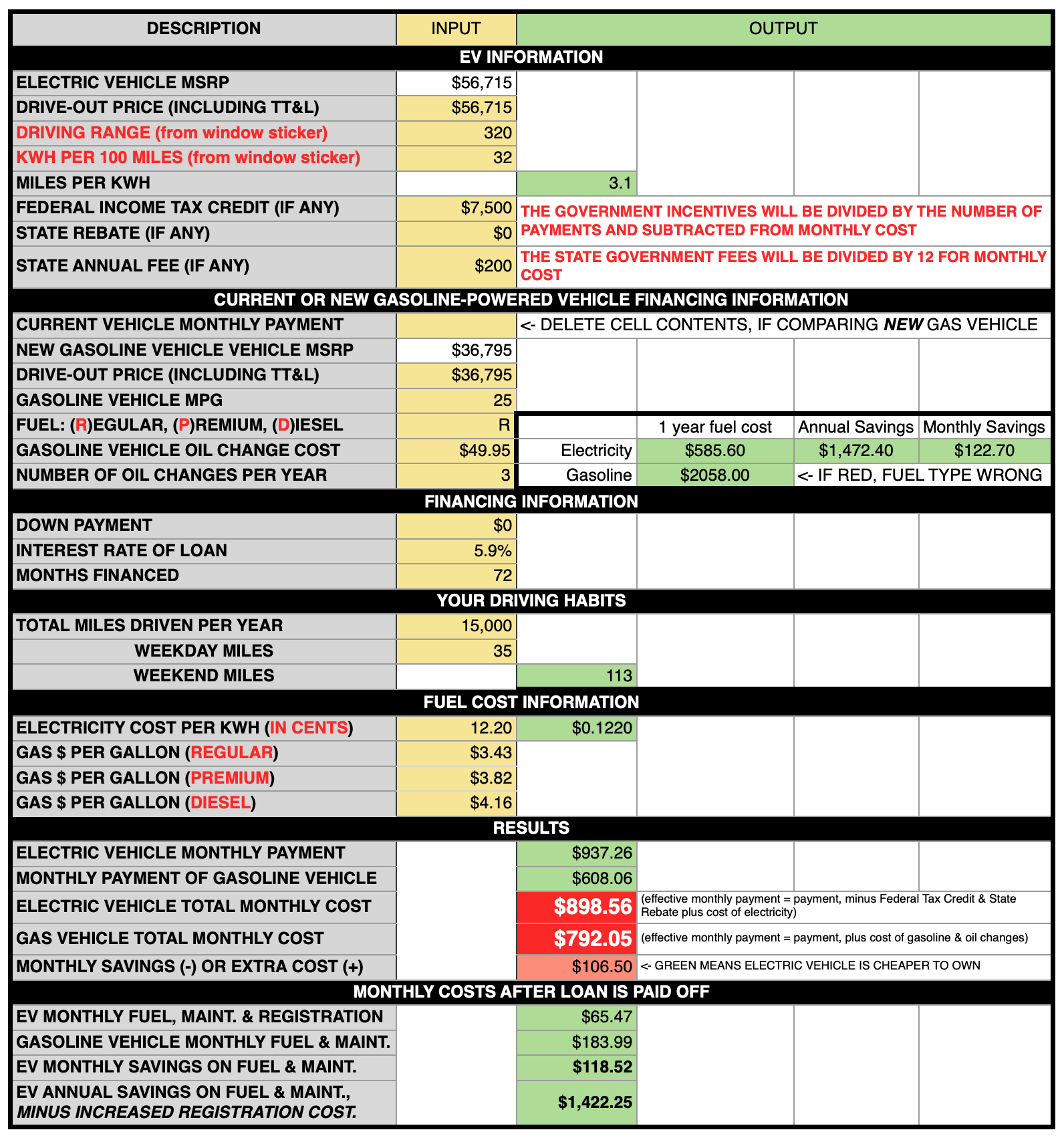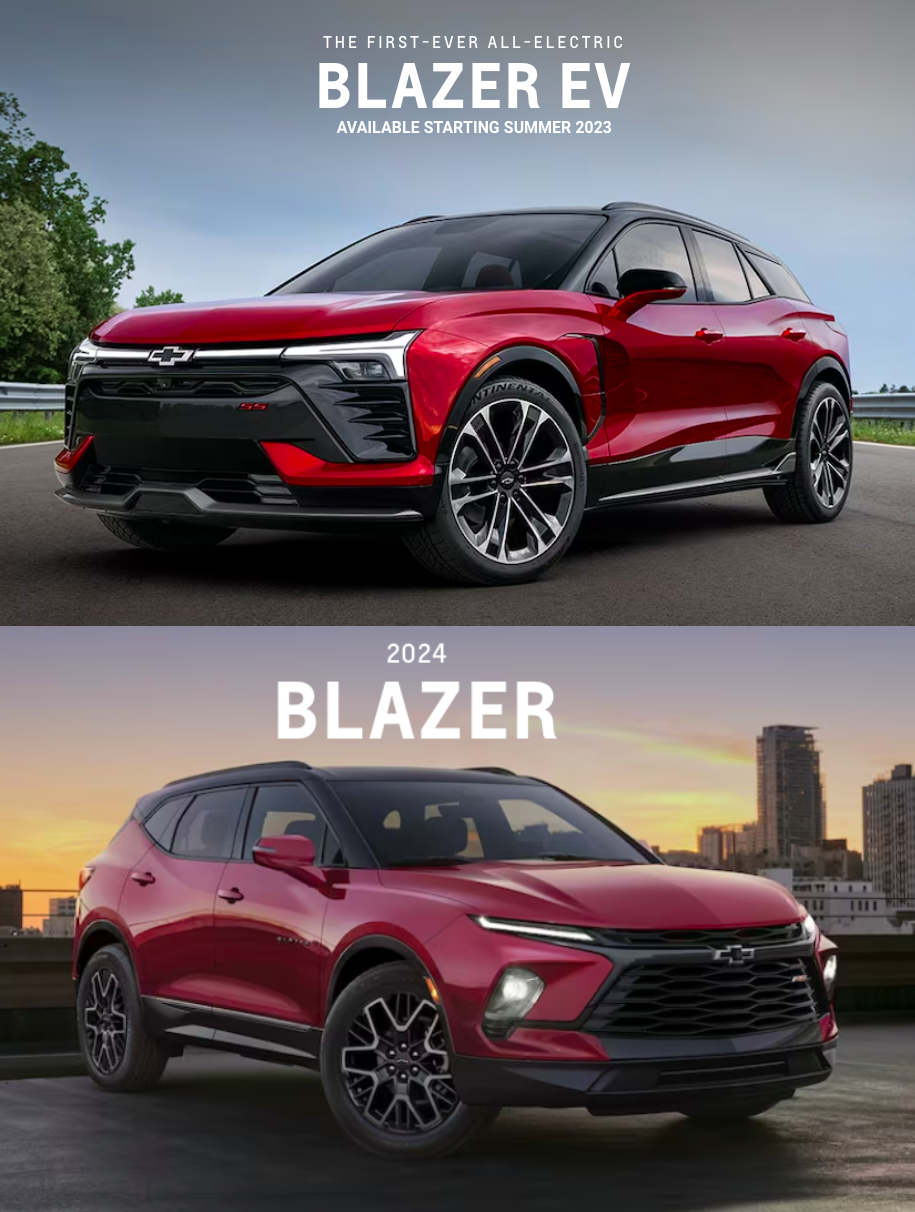I loved my first plug-in vehicle so much, I changed careers in 2013 to sell them. I worked at Classic Chevrolet, in Grapevine, Texas and was asked what I wanted my title to be. That’s the origin story of “EVangelist.” As a Chevy salesperson, I came to hate the phonetic similarity of Volt and Bolt EV. I started calling them “Victor” and “Bravo” to differentiate them, in discussions with customers. Today, I think Chevrolet is doing a wonderful thing: They’re giving their electrified models of existing ICE vehicles the same names and just adding “EV” on the end. Psychologically, it’s like saying they’re similar but a little different. It’s another way of dropping the knee-jerk “resistance” (pun intended) some consumers have to even trying out an EV but more importantly, it gives consumers a direct way to compare ICE to EV. Two examples are the Equinox and Blazer models.
Electric vehicle detractors always bring up the high price of some EVs to discourage consumers from even considering an EV for their next vehicle purchase. With all the news generated by announcements of the latest electric supercars from the likes of Rimac, Lamborghini, Ferrari, et al., it is a convincing argument, but as in all things, you have to dig a little deeper. There are many EVs today that are priced in the low- to mid-$30K range. The problem is these more down-to-earth vehicles don’t generate the attention (and therefore advertising dollars) of the supercars. This slants the discussion to a point that the general public just moves on.
The main issue slowing EV-to-ICE comparison is that many in the EV-curious public have still not grasped the important concept of “total cost of ownership.” Once buyers realize how affordable many EVs are (once you add in fuel & maintenance costs) they begin to have a sense of urgency about learning more and joining the EV revolution. This is especially true when gasoline prices spike.
As an example, let’s consider the Chevrolet Blazer at the 2LT trim level. (shown above)
- Gasoline-powered MSRP: $36,795
- Cost of regular gasoline (Texas average from AAA): $3.43 per gallon
- MPG (combined, per window sticker) 25 MPG
- Federal Income Tax Credit: $0
- Actual price: $36,795 + TT&L
- EV MSRP: $56,715 (holy cow! How can that be competitive?!?… just hang on a moment)
- Cost of electricity (Texas lowest cost from www.powertochoose.org): $0.122 per kWh
- kWh per 100 miles (estimated) 32* (more on this later…)
- Federal Income Tax Credit: $7,500
- State Rebate: $0
- Additional EV Registration Fee: $200 (this is starting in September 2023)
- Actual price (after government incentives): $49,215 + TT&L. Still a sizable difference, but wait! There’s more!
The federal government has a statistic called MPGe (for miles per gallon equivalent). It’s a terrible way to equate gasoline and electricity, because it just compares the energy, in BTUs, between the two energy types. But that’s only part of the story. EVs are so much more efficient, that they utilize much more of the electric energy than gasoline-powered vehicles do with the energy in gasoline.
What consumers really care about it how much it costs to get down the road. When looked at that way, the MPG dollar equivalent of electricity (MPG$e) for the Blazer EV is 88 MPG$e*, if you can charge at home, where you may have some control over price.
*(This is extrapolated from the AWD Blazer EV’s 35 kW-Hrs per 100 miles on the window sticker of an AWD Blazer EV, since the more efficient RWD Blazer EV is not yet in production. To estimate the efficiency increase of RWD vs. AWD, I used the Kia EV6’s RWD vs. AWD ratio.)
Just imagine an American-made SUV that gets 88 MPG versus a gasoline SUV’s MPG of just 25 MPG (combined). If you drive 15,000 miles a year, you’ll spend $2,058 for gasoline, versus $586 for electricity, in the EV version. More importantly, these amounts are paid every single year you drive the Blazer. That’s $1,472 saved in fuel costs every year, if you choose the electric Blazer over the gasoline version. Even better news:
- The $0.122 price per kWh for electricity can be locked in for up to 3 years! The price of gasoline will fluctuate, based on wars, pandemics and the whims of oil producers & speculators.
- The powertrain warranties are very different:
- Gasoline Blazer: 3 year / 36,000 miles
- Blazer EV: 8 years / 100,000 miles (and yes, that warranty covers the battery and charging system as well)
Then there’s the maintenance savings. EVs typically do not have the following:
- Oil & oil filter* (this is the only maintenance cost used in my comparison, so the numbers are actually much better for EVs than the spreadsheet shows)
- Transmission, transmission fluid & filter
- Spark plugs,
- Timing chain/belt
- Fan belts
- Engine air filter
- Exhaust system (like catalytic converters which attract thieves), and
- Fuel injectors/Carburetor
If you don’t have those items, you don’t have to have them regularly serviced. In addition, EVs have regenerative braking systems which generate electricity to slow the vehicle down, rather than the friction and heat of traditional brakes in internal combustion engine (ICE) vehicles. Consequently, electric vehicles’ brakes last much, much longer.
The benefit is that most EVs have almost no scheduled maintenance for the first 150,000 miles, other than rotating the wheels so the tires wear evenly. If we just take the lack of oil changes alone into consideration, the total cost of buying and driving the electric Blazer is about $107 more per month(about 13%), while you’re paying off the loan. (see spreadsheet below)
Once the vehicle loan is paid off, the lack of oil changes and increased efficiency of the electric Blazer saves you about $1,422** every year you keep driving it, when compared to the ICE version. That savings even includes that the Blazer EV has a $200 additional fee for registration every year, in Texas. Add in all the scheduled maintenance required for the ICE Blazer and it’s even more compelling.
**As a reminder, the only maintenance cost that was used in this estimate was 3 oil changes per year, not all the other scheduled maintenance required for the gasoline version)
If you test drive both types of Blazer and are armed with this information, my bet is you’ll never buy an ICE vehicle again.


